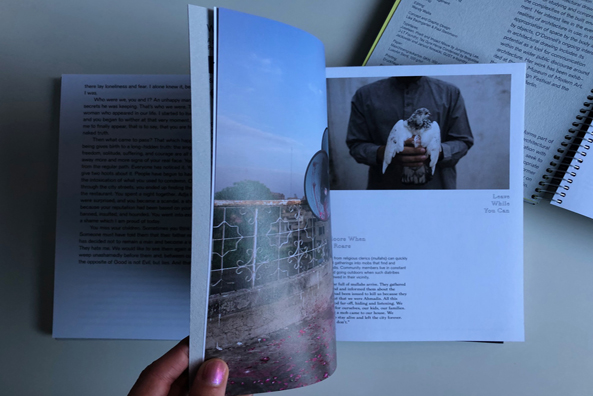29.10.2021, 09 Uhr
Who were we, you and I?
New publication with contributions by JUNGE AKADEMIE fellows 2020

“It matters what matters we use to think other matters with; it matters what stories we tell to tell other stories with; it matters what knots knot knots, what thoughts think thoughts, what descriptions describe descriptions, what ties tie ties. It matters what stories make worlds, what worlds make stories.”
― Donna J. Haraway, Staying with the Trouble: Making Kin in the Chthulucene
In the midst of a global pandemic, international exchange was brought to a standstill for several months in 2020, while a global experience of uncertainty and frozen futures became the “new normal” for many artists. The “news sounds like a stopwatch counting down the amount of time left on Earth” (Christin Berg, Visual Arts fellow). And while the future is postponed, learning to be “truly present” (1) takes on new meaning in this moment of “isolation, proximity, fragility” (Jennifer O’ Donnell, Architecture fellow), where it also becomes more evident than ever “that the condition of the life of one affects that of all the others” with an “interchangeable intertwined “you” and “I” (Cássio Diniz Santiago, Visual Arts / Performing Arts fellow). But it might be “comforting to know that everyone is in this together” (Nida Mehboob, Film and Media Arts fellow) and even to see an “opportunity to start living anew … a chance for all of us to build a new world” (Sasha Kurmaz, Visual Arts fellow) ‒ one which poses questions about values, needs, and approaches that have yet to be thought. (2)
Because the fellows were not able to come together as a group, this publication was initiated to create an alternative space for conversations, experiences, stories, and research. Representing widely diverse artistic positions from many fields, the 20 artists that were selected as fellows of the Akademie der Künste (Academy of Arts) in 2020 have turned the virtual “we” into a book. Starting small, with the artists’ projects themselves, but expanding to encompass cultural, political and social contexts, these contributions show glimpses of ways of thinking and speaking, of their work and its impact as well as the ongoing battles drowned out by this never-ending present. How do we want to be seen, heard and perceived? What (art) world do we envision? What aesthetics should emerge from it? What spaces do we construct in times of crisis and transformation? And speaking with Haraway’s quote in mind: What stories make worlds, what worlds make stories?
These contributions take shape in artworks, collages, short stories, fictional letters, theoretical and dramatic texts and even survival guides reflecting on the notion of care, identity, and togetherness, the need for other stories, a new grammar and radical diversity in the face of risks of violence and structural injustice. They also focus on artistic practices used as strategies for world- and resistance-building – sharing and manifesting diverse narratives, knowledge and memories.
With contributions by:
Christin Berg, Yvon Chabrowski, Farhad Delaram, Cássio Diniz Santiago, Miguel Hilari, Ruth Kaaserer, Meena Kandasamy, Sasha Kurmaz, Mohamed Mbougar Sarr, Nida Mehboob, Ada Mukhina, Nazanin Noori, Jennifer O’Donnell, Sahej Rahal, Lucie Sahner, Mia Sanchez, Fabià Santcovsky, Aled Smith, Undine Sommer, Phillip Valente
(2) “Notes on Isolation”: www.junge-akademie.adk.de